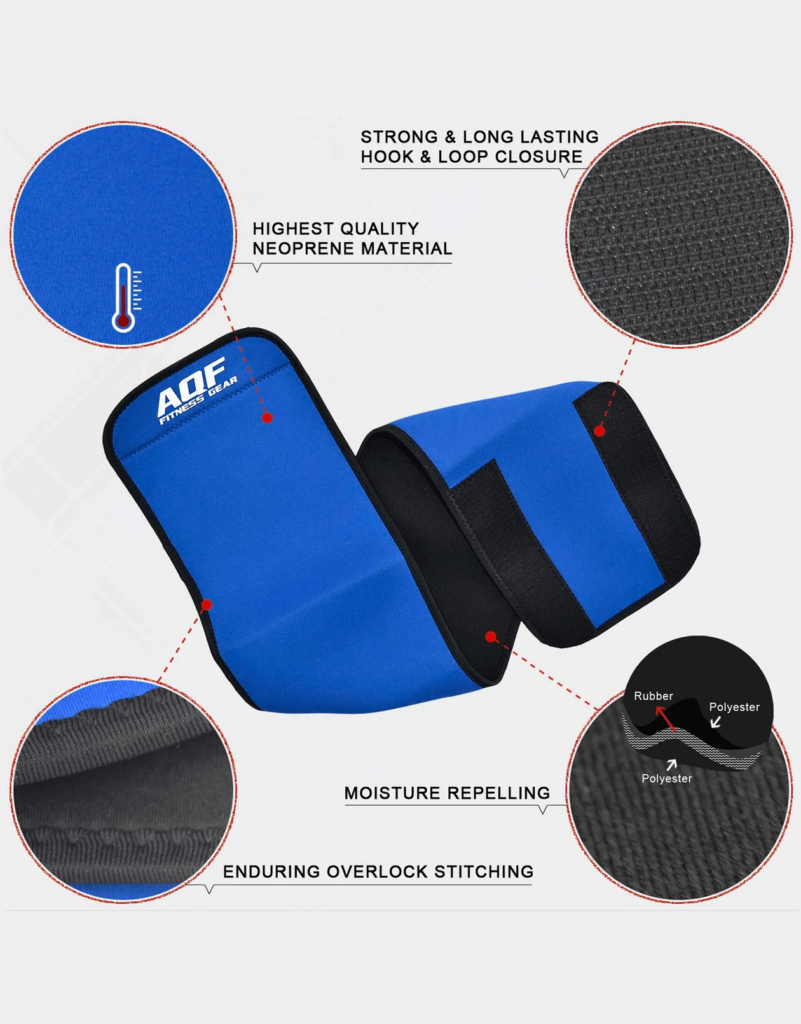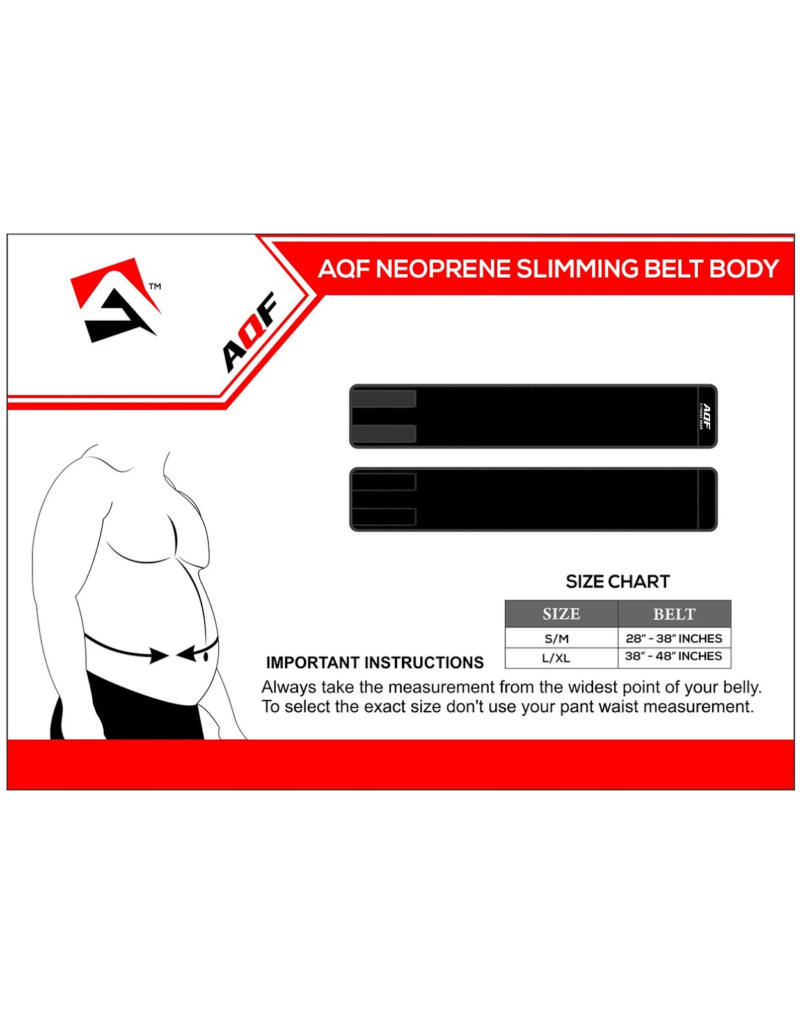Do Slimming Belts Work?

Slimming belts have become quite popular these days and the makers swear by its effectiveness in weight reduction around targeted areas. You simply need to wrap these slimming belts around the target area – usually your midsection – and see the weight loss magic. However, there is limited evidence as to whether slimming belts work or not. Let’s break it down.

What is a Slimming Belt?
A slimming belt or a Compression Belt is made from neoprene and worn around the waist during workouts or daily activities. These belts claim to aid weight loss by generating heat and intensifying sweat production in the midsection.
- Individuals who wear slimming belts report a warming sensation and increased perspiration around the abdomen.
- Some may also experience compression or tightness, which they might associate with waist slimming or toning.
Suggested Read: How to Get Rid of Lower Belly Fat: Diet Tips and Exercises

Do Slimming Belts Aid Weight Loss?
The immediate effects of wearing a slimming belt—such as sweating or the feeling of compression—don’t necessarily translate to significant fat loss or long-term weight reduction.
Scientifically, the increased heat generated by these belts might lead to temporary water weight loss due to heightened perspiration. This effect creates the appearance of immediate weight loss, but it’s largely temporary and reversible upon rehydration.
When to Wear a Slimming Belt?

During Workouts:
Wear the slimming belt during exercise sessions to maximize its intended effects.
Opt for cardio or strength training workouts while wearing the belt for increased heat and sweat production around the midsection.
Before Cardio Workouts:
Consider wearing the belt just before starting your cardio workout (like running or cycling).
This can help raise your body temperature and enhance sweat production during the workout.
During Daily Activities:
Some individuals prefer wearing slimming belts during regular daily tasks or chores to maintain a consistent level of warmth and compression around the waist.
Avoid Prolonged Wear:
Refrain from wearing the belt for extended periods, especially when not physically active.
Extended wear can lead to discomfort, skin irritation, dehydration and it may even interfere with normal breathing patterns.
Ensure Proper Fit:
Always choose a belt that fits comfortably without being too tight or restrictive.
Check for any discomfort or breathing difficulties while wearing the belt.
Avoid While Eating:
Refrain from wearing the belt during meals as it may cause discomfort or interfere with digestion.
How to Find the Perfect Slimming Belt Size?

There are Better Ways to Lose Body Fat
Studies suggest that while these belts may offer short-term cosmetic changes, like reducing water weight or providing a perceived tightening effect, they don’t substantially contribute to fat loss or overall weight reduction. The body tends to shed fat uniformly rather than from specific targeted areas like the midsection, which these belts claim to target.
Balanced Diet:
Eat whole, unprocessed foods like lean proteins, fruits, vegetables, whole grains, and healthy fats.
Limit refined sugars and processed foods as they contribute to fat accumulation, especially around the waist.
Portion control is key. Eating in moderation helps manage calorie intake.
Suggested Read: How Diet and Exercise Work Together for Lasting Health and Weight
Regular Exercise Routine:
Incorporate both cardio and strength training exercises into your routine.
Cardio workouts like running, swimming, or cycling help burn overall body fat, including abdominal fat.
Strength training builds muscle, which boosts metabolism and aids in fat loss.
High-Intensity Interval Training (HIIT):
HIIT workouts involve short bursts of intense exercise followed by brief rest periods. They’re effective for burning calories and targeting belly fat.
Mindful Eating Habits:
Practice mindful eating by paying attention to hunger cues and eating slowly.
Avoid eating late at night as it can lead to fat storage, particularly around the abdomen.
Adequate Sleep:
Lack of sleep disrupts hormonal balance, increasing appetite and promoting fat storage, especially in the abdominal area. Aim for 7-9 hours of quality sleep per night.
Stress Management:
High stress levels can trigger the release of cortisol, a hormone linked to increased abdominal fat. Engage in stress-relieving activities like yoga, meditation, or deep breathing exercises.
Hydration:
Drinking plenty of water helps in overall weight management and can aid in reducing bloating and water retention.
Limit Alcohol Intake:
Alcohol contributes to abdominal fat accumulation. Reducing alcohol consumption can positively impact belly fat.
Slimming Belt – Frequently Asked Questions
Does a slim belt reduce belly fat?
Slimming belts may create the appearance of a slimmer waist due to temporary water weight loss through increased sweat. However, they don’t directly target or reduce belly fat in the long term.
What’s the point of a slimming belt?
Slimming belts claim to enhance weight loss efforts by increasing sweat and heat around the midsection during workouts. They aim to provide a temporary slimming effect or the perception of a toned waistline.
How to lose belly fat in 2 weeks?
Losing significant belly fat in two weeks is challenging and not advisable for sustainable and healthy weight loss. Instead, focus on a balanced diet, regular exercise (including cardio and strength training), adequate sleep, hydration, and reducing stress over the long term for gradual fat loss.
Do belly bands work for weight loss?
Belly bands or slimming belts might offer temporary cosmetic changes by reducing water weight or providing a feeling of tightness. However, they aren’t effective for significant or sustained weight loss and should be used cautiously, considering comfort and safety.
The Bottomline
While wearing a slimming belt might give a quick sense of change, they aren’t a substitute for healthy lifestyle habits such as a balanced diet and regular exercise for sustainable weight management. Seeking guidance from fitness experts or healthcare professionals is crucial for achieving enduring and healthy weight loss goals.
Discover More Topics





